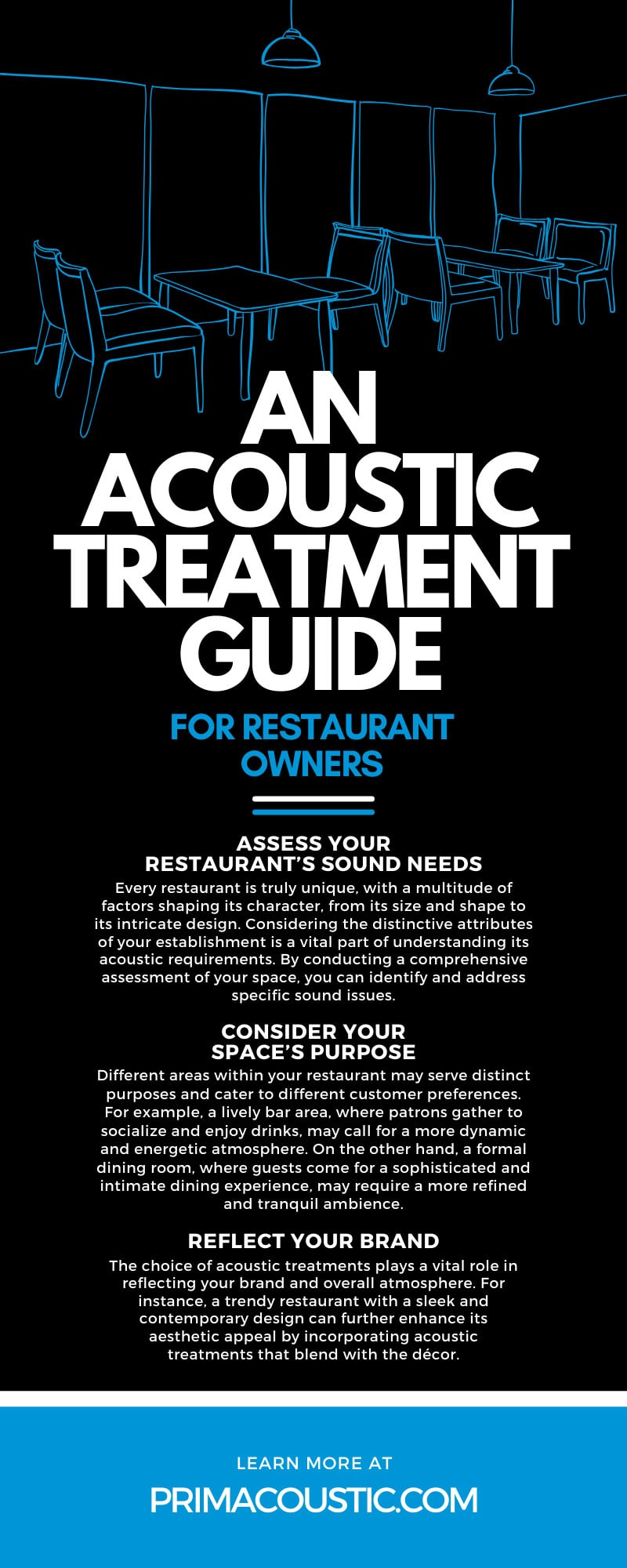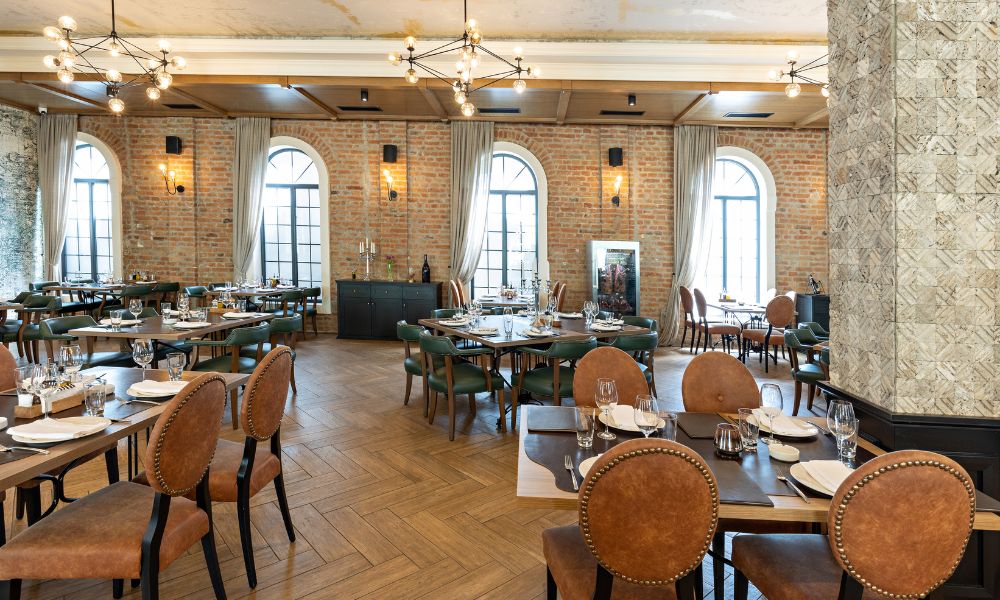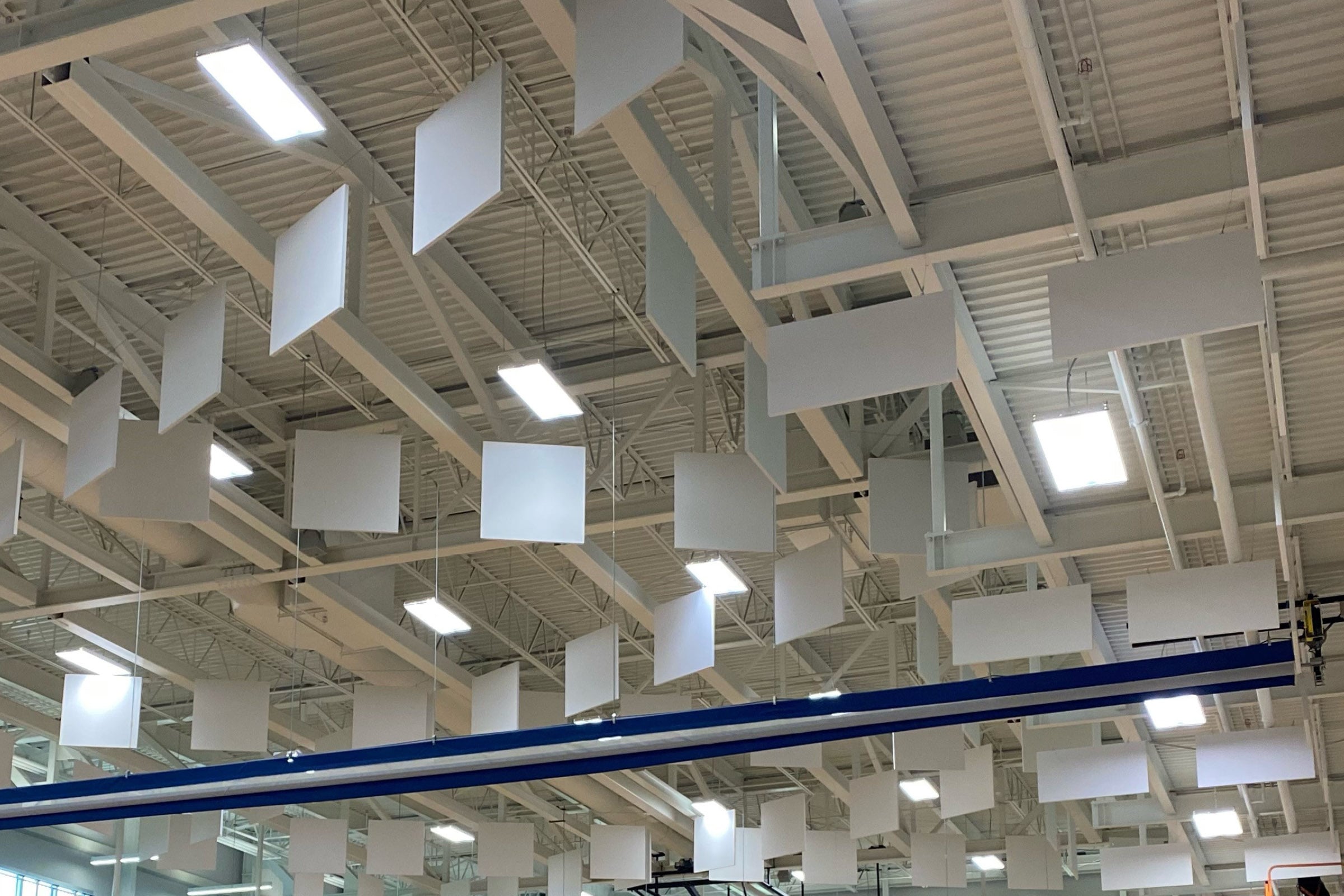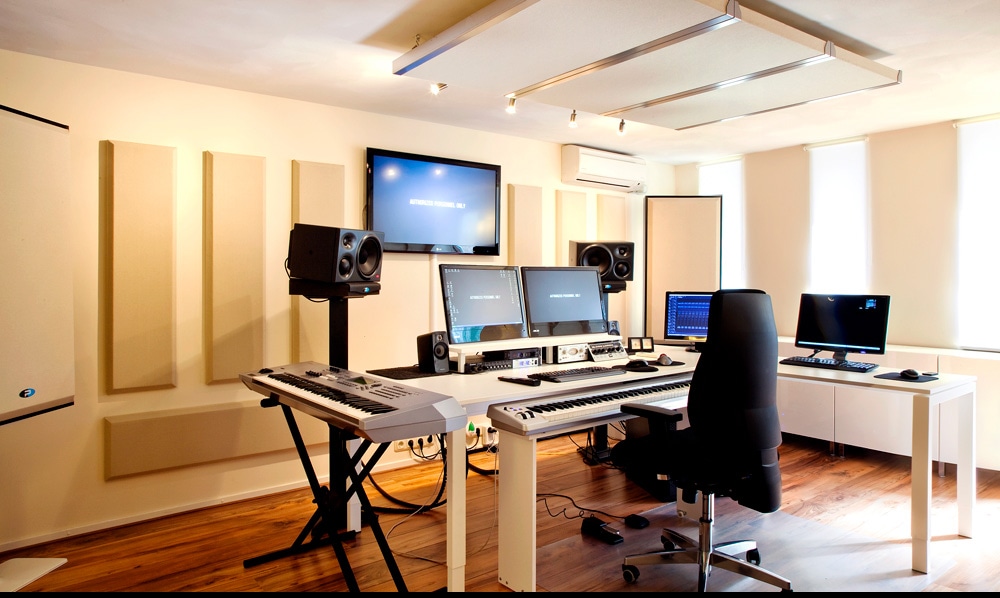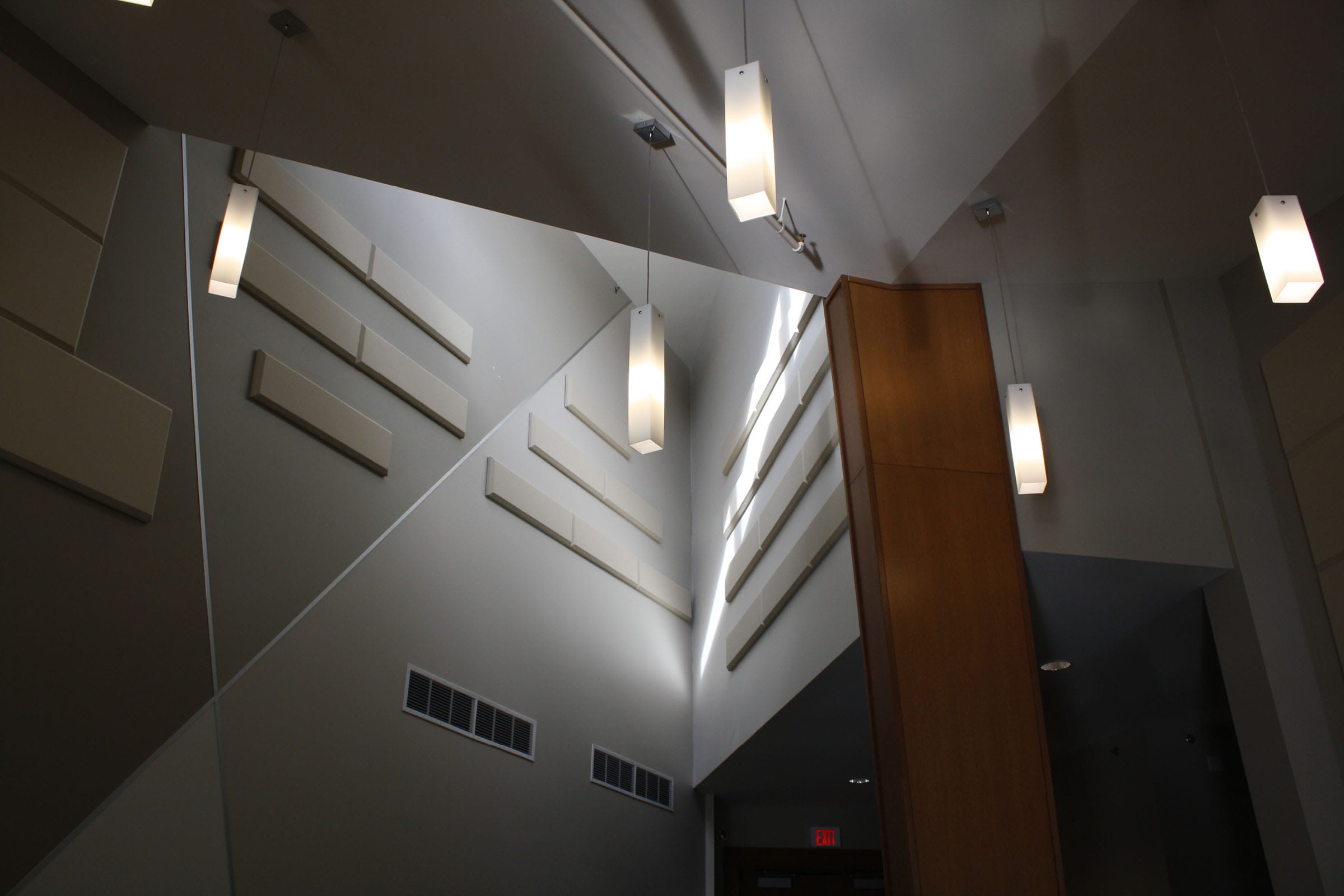When you’re a restauranteur, there are so many variables you need to be on top of if you want your restaurant to thrive. The quality and diversity of your food are crucial considerations, and you should also be sure to pay close attention to your staff. However, while these factors are important, customer satisfaction should be one of your highest priorities, and a big factor influencing their happiness is your restaurant’s acoustics. If you’re unsure of the best way to improve sound in your restaurant, let our acoustic treatment guide for restaurant owners help.
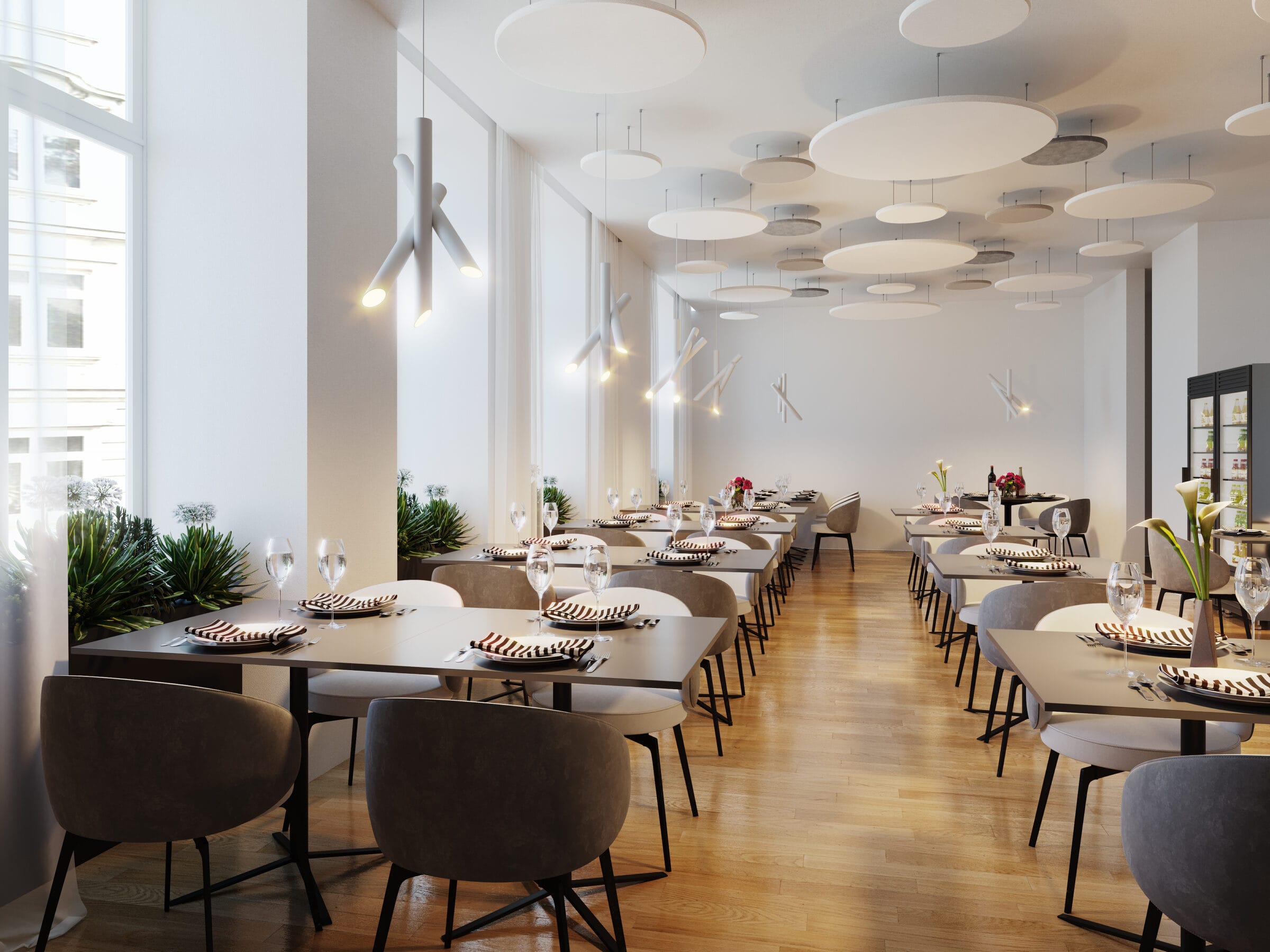
Understand Acoustics
Acoustics is a fascinating field of study that delves into the intricacies of sound and its behavior in different environments. When it comes to creating a pleasant and immersive dining experience in your restaurant, it’s crucial to have a solid understanding of how sound waves interact with different surfaces. When you take informed steps, you can effectively manage the acoustics in your restaurant and optimize it in a way that works for your customers and staff.
Assess Your Restaurant’s Sound Needs
Every restaurant is truly unique, with a multitude of factors shaping its character, from its size and shape to its intricate design. Considering the distinctive attributes of your establishment is a vital part of understanding its acoustic requirements. By conducting a comprehensive assessment of your space, you can identify and address specific sound issues.
For example, maybe noise is incredibly loud in seats close to the kitchen or front entrance, while other restaurants may have too much noise from the AC system. Whatever your restaurant’s acoustic problem is, identify it; once you spot trouble areas, you can better assess what the proper acoustic solution may be.
Consider Your Space’s Purpose
Different areas within your restaurant may serve distinct purposes and cater to different customer preferences. For example, a lively bar area, where patrons gather to socialize and enjoy drinks, may call for a more dynamic and energetic atmosphere. On the other hand, a formal dining room, where guests come for a sophisticated and intimate dining experience, may require a more refined and tranquil ambience.
When selecting acoustic treatments for your restaurant, it is important to consider each space’s intended ambience. With each purpose in mind, you can implement the correct acoustic solution that enhances customers’ dining experience and makes communication easy for your staff.
Reflect Your Brand
The choice of acoustic treatments plays a vital role in reflecting your brand and overall atmosphere. For instance, a trendy restaurant with a sleek and contemporary design can further enhance its aesthetic appeal by incorporating acoustic treatments that blend with the décor.
These treatments provide functional benefits by reducing noise levels while adding an extra touch of sophistication and elegance to the dining experience. Carefully select the right acoustic treatments that will both elevate your restaurant’s ambience and make customers’ visits more memorable.
Beware Hard Surfaces
While hard surfaces such as sleek tile floors and industrial concrete walls contribute to the appeal of your restaurant, they can also create excessive reverberation. If left unchecked, these reverberations can lead to a loud and echoey environment. Consider incorporating softer materials such as plush carpeting, elegant drapes, or acoustic panels to achieve a harmonious balance between aesthetics and acoustics. These additions will enhance the overall ambience and effectively control sound reflections, providing a pleasant and enjoyable dining experience for your customers.
Use Absorptive Materials
As mentioned in the last point, hard surfaces hurt acoustics, and absorptive materials improve acoustics. By effectively absorbing sound energy, these acoustic solutions create a more pleasant and acoustically balanced environment. Whether you place them near the kitchen, front entrance, or just in the middle of your restaurant, the right materials can greatly enhance the sound intelligibility in your restaurant.
Optimize Furniture Layout
The arrangement and placement of tables, chairs, and other furniture in your restaurant can have a profound impact on the acoustics of the space. By strategically positioning these elements, you can create an ambience that enhances the dining experience for your guests. Avoid overcrowding and allow for ample space between tables, ensuring that noise can’t bounce off surfaces and create excessive echoes. This attention to detail can contribute to a more pleasant and comfortable atmosphere for your patrons to enjoy their meals.
Address Kitchen Noise
The kitchen, with its bustling activity, can often become a significant source of noise in restaurants. Consider installing a high-quality sound barrier to ensure a peaceful and undisturbed dining atmosphere. When you use the right materials that can absorb and reduce kitchen noise, you can limit the spread of sound and create a more enjoyable and tranquil dining experience for patrons. With these measures, restaurant owners can effectively mitigate the disruptive effects of kitchen noise and create a more serene restaurant atmosphere.
Embrace Sound Masking
Sound masking, also known as acoustic conditioning, is a technique used to enhance acoustic environments by introducing low-level background noise. The right sound masking helps reduce the perception of louder sounds, creating a more comfortable and pleasant ambience.
This method can be particularly beneficial for restaurants, as it allows for a better dining experience by minimizing distractions and providing a more intimate setting. However, while masking is a good option, it’s better to solve the problem of noise in your restaurant at the source instead of just masking it. Before moving into sound masking territory, do what you can to address the problem of sound reverberations in your restaurant first.
Consider Acoustics During Construction
If you’re still in the early planning stages of opening a restaurant or are contemplating renovations, now is the perfect opportunity to embrace the benefits of integrating acoustic design principles. By strategically incorporating effective acoustic treatments during the construction phase, you can enhance the ambience and customer experience while also saving time and money in the long run.
Whether it’s optimizing sound insulation to minimize noise transfer or using sound-absorbing materials to reduce reverberation, the right acoustic design can create a more comfortable dining experience for your customers. Don’t overlook the significant impact that a comprehensive acoustic solution can have on your restaurant’s success.
Seek Professional Advice
When it comes to acoustic treatments, it’s important to acknowledge the complexity involved. That’s why seeking advice from experienced professionals in restaurant acoustics is so crucial. These experts possess the necessary expertise to assess your specific space and provide tailored recommendations for optimal sound management. By taking advantage of their knowledge, your restaurant can create an environment that looks and sounds amazing too, ensuring a pleasant dining experience for all your customers.
When you follow this detailed acoustic treatment guide for restaurant owners, you can create a truly immersive and enjoyable dining experience for customers. However, while there are clear steps to take, they aren’t always the easiest. If you need help giving your restaurant the acoustics you want, let Primacoustic help. With our extensive selection of restaurant sound dampening solutions, we can find what’s right for you and make troublesome acoustics in your restaurant an issue of the past.
